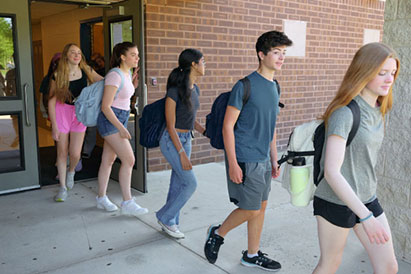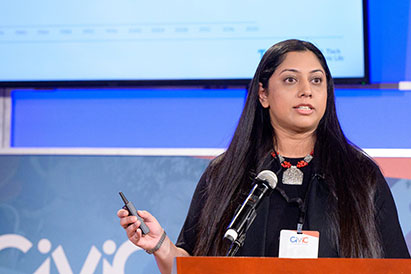There’s a moment, just before a student raises their hand, when you see the wheels turning. A flicker of hesitation, the weighing of whether their thought is worth sharing. And then—if the classroom is the right kind of space—confidence wins, and the question, the insight, the challenge spills into the air. I saw that moment over and over again this week in classrooms where teachers were using iCivics to guide discussions on democracy, governance, and civic responsibility.
It’s easy to talk about civic education in broad strokes. We know the statistics, the declining trust in institutions, the polarization. But in these classrooms, the conversation was immediate, alive. Students debated real-world court cases, mapped out the branches of government, stepped into the roles of legislators and advocates. And in the center—calm, nimble, engaged—were the teachers.
Teachers do more than instruct. They hold space for tough conversations, model engagement with disagreement, help students see the weight of their voices. In one classroom, a student hesitated before responding to a classmate’s argument. The teacher let the moment breathe. Eventually, she spoke—not just to counter but to build on the idea. That small thing was the foundation of civic engagement: listening, considering, responding with purpose.
How do you teach civic courage? How do you help young people feel the power of participation in a system that can seem too large, too distant, too broken? The teachers I observed weren’t delivering grand speeches or prescribing a single way to engage but creating conditions where students could discover for themselves. They nudged, they asked, they left silences open just long enough for students to step in.
There’s a kind of hope in this work. At a time when civics can feel like a battleground, these teachers are not retreating. They lean in, trusting that giving students tools to understand, question, and shape the world is worth what they might face. They teach not just the mechanics of government but the habits of participation, the confidence to speak and listen, the understanding that democracy is not a spectator sport.
I left thinking about the long arc of influence. How a single teacher can shift a student’s sense of agency. How a single moment—raising a hand, offering a counterpoint, taking apart an argument and building it back stronger—can begin a lifetime of engagement. These teachers shape not just the next generation of voters but community builders, advocates, and leaders.
Not every hand will go up. Not every student will leave fully convinced of their power. But the invitation is there, the door is open. And maybe that’s enough for now—to create the space where the next generation can step forward, take their place in the conversation, and decide what comes next.




